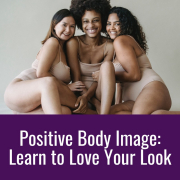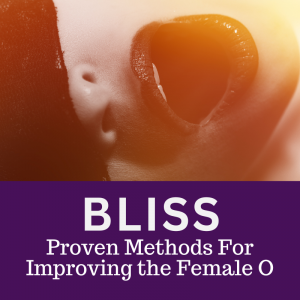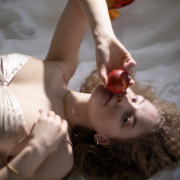Female Orgasmic Disorder Treatment
Female Orgasmic Disorder Treatment
If you’ve stumbled upon a term called female orgasmic disorder treatment, you might be curious to learn what it actually is. There are many reasons why you might not be able to reach a climax in your relationship. Therapy, medicine, and addressing underlying problems are possible treatment forms. However, a professional will need to see you first to detect the root of the problem.
In this article, we’ll take a closer look into female orgasmic disorder treatment. Find out the reasons why it happens, which treatment options are available, and so much more that might be beneficial for you when learning about female orgasmic disorder.
What Is Female Orgasmic Disorder?
Orgasmic dysfunction occurs when a woman experiences difficulty or fails to experience an orgasm during a sexually stimulating moment.
When it’s not fun, having sex may turn from being a fulfilling, intimate experience for both parties to a chore. Sex may happen less frequently and with a decrease in sexual desire. Tension and animosity may result from this in the partnership.
A disorder known as orgasmic dysfunction is when a person struggles to experience an orgasm. Even when they are sexually aroused and receiving enough stimulation, they still struggle with this. This disorder is referred to as female orgasmic dysfunction when it affects women. Although it is far less common, orgasmic dysfunction can also affect men.
Orgasms are powerful sensations of release that occur during intercourse. Their frequency, duration, and strength might all change. Even minimal sexual stimulation can cause orgasms, although occasionally, much more stimulation is required.
Even when they receive plenty of sexual stimulation, many women still struggle to experience an orgasm with a partner. Many studies have indicated that 11–41% of women may experience orgasmic dysfunction. Anorgasmia, or female orgasmic condition, is another name for orgasmic dysfunction.
Causes of Female Orgasmic Disorder
10% to 15% of women report never having experienced an orgasm. According to surveys, as many as 50% of women express dissatisfaction with the frequency of their orgasms.
The complicated interaction between the mind and body occurs during sexual response. For an orgasm to occur, both must be in good working order.
Orgasmic difficulties might result from a variety of circumstances. Common causes are:
- Past experience of rape or sexual abuse
- Fatigue, tension, or despair in a relationship or during sexual activity
- Not understanding sexual function
- Prejudice about sex, which is frequently picked up in childhood or adolescence
- Embarrassment or shyness around physical touch
- Relationship problems
Health issues that may make it challenging to experience an orgasm include:
- Certain medications that are prescribed.
- Hormonal imbalances or changes (menopause).
- Persistent conditions that impact one’s sexual desire and well-being
- Endometriosis
- Damage to the nerves supplying the pelvis
- Contraction of the vaginal muscles
- Dryness in the vagina
Symptoms of Female Orgasmic Disorder
The inability to reach a sexual climax is the primary sign of orgasmic dysfunction. Other symptoms include orgasms that are not satisfying and climaxes that take longer than usual to reach.
It might be challenging for women with orgasmic dysfunction to experience an orgasm during masturbation or sexual activity.
Four categories of orgasmic dysfunction exist:
- Primary anorgasmia: The inability to experience an orgasm.
- Secondary anorgasmia: Having trouble experiencing an orgasm despite having experienced one previously.
- Situational anorgasmia: The most prevalent kind of dysphoric orgasm. It happens when you can only experience an orgasm in particular circumstances, such as during oral sex or masturbation.
- General anorgasmia: The inability to experience an orgasm in any situation, even when you’re really aroused and have received enough sexual stimulation.
Treatment for Female Orgasmic Disorder
If your sexual dysfunction is not causing an issue for you, it shouldn’t be considered as something that needs to be solved. You should seek treatment only if your dysfunction is bothering you or impacting your relationship with your partner.
Treatment types differ depending on the potential symptoms and causes of the sexual dysfunction you’re experiencing. You should share your concerns and learn to understand better your body and how intimacy works for you. Your sexual aspirations are also crucial when talking about treatment options.
If you’re experiencing sexual dysfunction as a woman, a comprehensive treatment approach addressing physical, relationship, and emotional factors could be very beneficial for you.
When treating sexual dysfunction, your physician may advise applying the following techniques:
- Converse and pay attention
- Adopt a healthy way of living
- Discover relaxing techniques
- Consult a counselor
- Apply lubrication
- Try using a gadget
When treating sexual dysfunction, an underlying issue should be addressed first. Your doctor could recommend switching medications or writing you a prescription for another one.
When talking about medications, these are the treatment options for female sexual dysfunction that most doctors recommend:
- Estrogen therapy
- Ospemifene (Osphena)
- Androgen therapy
- Flibanserin (Addyi)
- Bremelanotide (Vyleesi)
Asking for Help
Make an appointment with your physician if you believe you have orgasmic dysfunction. Your physician has the expertise to identify your ailment and devise an appropriate course of action. The greatest approach to guarantee that you can once again fully enjoy sexual activity is to get advice from your doctor.
Your doctor conducts a physical examination and inquires about your sexual history during your visit. Your answers and the results of the exam can assist in discovering additional elements that might be causing your issue, as well as any underlying reasons for orgasmic dysfunction.
For a follow-up checkup, your doctor might recommend that you see a gynecologist. For orgasmic dysfunction, additional treatments can be suggested by a gynecologist.
Therapy for Orgasmic Disorder
Couples therapy is yet another well-liked form of treatment. You and your partner can resolve any disputes or issues by working through them with the assistance of a counselor. This can settle the problems that are coming up in the bedroom and in the relationship.
In Conclusion
Being unable to experience an orgasm can be annoying and could affect your relationship. With the right care, you might be able to reach a climax. Realizing that you’re not alone is crucial. Orgasmic dysfunction is a problem that many women have at some point in their lives.
You might benefit especially from therapy if you experience orgasmic dysfunction. A portion of couples’ or individual therapy focuses on your perspective on sexual activity. You and your partner can better understand each other’s sexual needs and wants by attending therapy sessions. It will also take care of any relationship problems or daily worries that might be keeping you from experiencing an orgasm. In the future, resolving these underlying issues may facilitate orgasm experiences.
BLISS: Proven Methods for Improving the Female Orgasm
About Life Coaching and Therapy
Life Coaching and Therapy (LCAT) is a therapy and coaching practice that transforms our clients lives through our flexible. Multi-technique approach and pleasure-skills training provided by systematically-trained and licensed therapists!
 Get to know our founder and owner, Amanda Pasciucco, (a.k.a. The Sex Healer) PhD, Licensed Marriage and Family Therapist (LMFT), and an AASECT Certified Sex Therapist (CST) that has developed innovative therapy programs and therapy videos that get results.
Get to know our founder and owner, Amanda Pasciucco, (a.k.a. The Sex Healer) PhD, Licensed Marriage and Family Therapist (LMFT), and an AASECT Certified Sex Therapist (CST) that has developed innovative therapy programs and therapy videos that get results.
Our team of compassionate, licensed therapists and certified sex therapists help all clients who visit us for a variety of personal, relationship, intimacy and sex problems.
LCAT provides on-site appointments, as well as video chat and text therapy programs.
Learn more about how LCAT can help improve your life at What We Do.
























